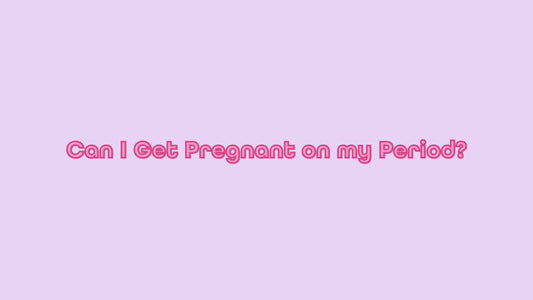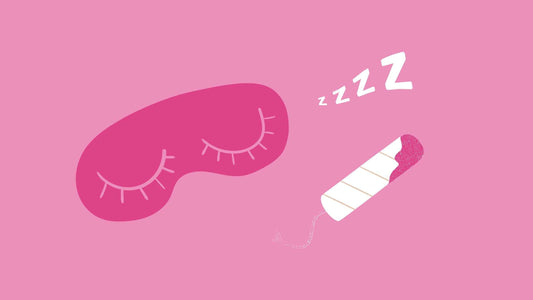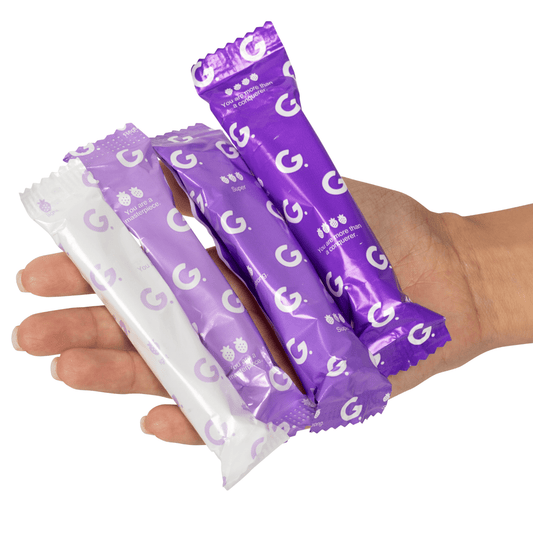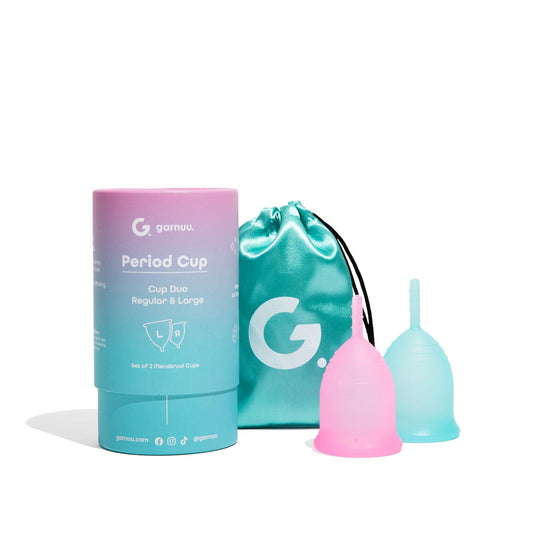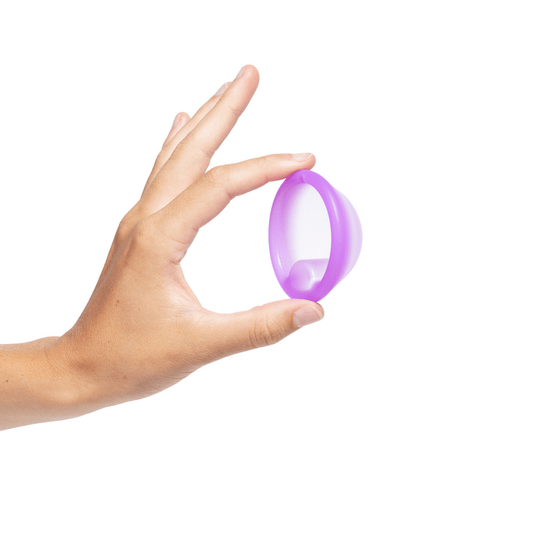
Follicular Phase: Everything You Need to Know
Share

The menstrual cycle is timed in terms of days. The cycle starts with the first day a period occurs and ends when another period begins. Most women have cycles that run between 24 and 38 days, although some are shorter and some are longer.
With the whole of the cycle, there are four phases that the body goes through menstruation, follicular, ovulation, and luteal. Each phase takes part in specific parts of the reproductive organs.
Menstruation involves the uterus. The follicular phase, also called pre-ovulation, occurs with the ovaries. Ovulation is considered the middle point of the cycle. The final stretch of the menstrual cycle contains the luteal phase.
The Menstrual Cycle

To fully understand what the follicular phase is you’ll need to understand the rest of your cycle:
- Your period: day 1 of your cycle usually starts with the first day of your period where your body is shedding the uterus lining that would’ve prepared itself for a potential pregnancy.
- Follicular phase: your body begins to enter the follicular phase where estrogen levels rise and reline your uterus.
- Ovulation: midpoint of your cycle, your body releases an egg that could be fertilized during ovulation.
- Luteal: after ovulation, your body enters the luteal phase where your body slows down to prepare for a potential pregnancy. If pregnancy doesn’t occur, your body begins to shed the uterus lining again starting your cycle all over again.
Hormone levels during your menstrual cycle

There are many reasons to learn about the menstrual cycle. Most commonly women seek to pinpoint the highest fertility levels, increasing the odds of conception. It is also possible to determine which part(s) of the menstrual cycle may be causing problems to aid in successful treatments.
The focus here will be on the second phase of the cycle, the follicular phase.
What is the Follicular Phase?
This phase is also known as the pre-ovulation phase and occurs in three parts. It begins on the first day of menstruation and is completed when ovulation occurs. When dividing your cycle, this phase is considered the first half, divided from the second half by ovulation.
Once the dominant follicle has grown and adequate time has passed, this phase transitions into ovulation and the menstrual cycle progresses.
It is this part of the menstrual cycle in which the body is being prepared for ovulation. The pituitary gland sends out specific hormones, called follicle-stimulating hormones (FSH). This hormone triggers the production of follicles in the ovaries. Follicles are the tiny sacs that contain eggs.
As the phase continues, only one follicle in one ovary will continue to mature. The remaining follicles will die. As the one dominant follicle, the remaining follicle will continue to grow, trigger estrogen production, and prepare for release through ovulation.
Early Follicular Phase
During this early phase of pre-ovulation, at the beginning of the cycle, levels of progesterone and estrogen hormones are very low. The pituitary gland will begin releasing a specific hormone to trigger follicle growth. Follicle-stimulating hormone (FSH) is the hormone that triggers the ovaries to begin producing follicles that will contain eggs. Luteinizing hormone (LH) and estrogen are also produced, and these hormones begin preparing the uterus for embryo implantation.
The average number of follicles produced can be as few as five and as many as 20. Follicle growth triggers the production of a type of estrogen called estradiol, as well as other hormones such as inhibin A and B.
Middle Follicular Phase
In the middle phase, the follicles continue to grow. A cavity within the follicle, next to the egg, forms and is filled with fluid. Follicles will gradually increase estrogen production. As the follicles increase estrogen levels, the pituitary gland stops producing FSH and levels begin to decrease while estrogen levels continue increasing.
Last Follicular Phase
In all the follicles produced, only one can be dominant and released during ovulation. The dominant follicle continues to produce estrogen, and the remaining follicles die. The increase of estrogen, in conjunction with LH production, causes changes to the uterus to prepare for the attachment of a fertilized egg. The lining thickens and is rich in the vitamins and nutrients a fertilized egg would need to grow. Estrogen production by the solitary follicle peaks just before ovulation.
How long is the follicular phase?
After asking what is a follicular phase, the next question is often how long it lasts. This follicular phase averages between 16 and 17 days, but it varies between women. The length of the follicular phase can also vary from one cycle to the next in one woman. Additionally, if you have a consistently irregular cycle, you can also experience irregularities in phases.
The length of the follicular phase may also become shorter as you get closer to menopause. The phase transitions into the ovulatory phase when LH surges to trigger the release of the egg. In a shorter phase, follicles may die before the egg can be released. Egg release in the ovulation phase is delayed in a longer phase.
What does a short follicular phase mean?
A short follicular phase is one that lasts less than 11 days. It is a common occurrence as you age and get closer to menopause. If the phase is shorter, there is not enough time to allow the dominant follicle to properly mature. This can make successful fertilization difficult which means your chances of begging pregnant are slimmer.
Shorter follicular phases are often due to a decrease in LH production. Without consistent LH levels, follicles rupture and die before one can reach dominance and grow. LH also has the role of starting uterine preparation for the attachment of fertilized eggs. With lower LH, the uterus may not be able to successfully hold the egg. There may not be an adequate amount of time for the uterus lining to thicken properly.
What does a Long Follicular Phase Mean?
A long follicular phase is one that lasts longer than 19 days. This is a common occurrence if you tend to have a longer menstrual cycle. There are not usually any fertility problems associated with a longer follicular phase, but it just means that the ovulation process is taking much longer than average.
In a long pre-ovulation, you may notice that energy levels are higher for longer, or that stamina decreases occur earlier and last longer. There are several reasons as to why you could have a longer follicular phase:
- Birth control may lengthen a woman's menstrual cycle
- or you have a vitamin D deficiency
Knowing the length of these phases can be critical to an individual’s likelihood of becoming pregnant or incidate whether a woman is nearing menopause.
Follicular vs. Luteal Phase
- The follicular phase lasts between 11–27 days; 16 days on average.
- The luteal phase lasts between 11–17 days; 13 days on average.
Generally speaking, the menstrual phases are broken up into 2 phases (Follicular and Luteal) then broken down to four (menstruation/follicular) then (ovulation/luteal).
These two major phases are named after the elements that define them: The follicular phase revolves around the maturation of an egg within a follicle, whereas the luteal phase involves the follicle’s transformation into the corpus luteum.
When does the follicular phase shift to the luteal? When the follicle releases the egg during ovulation and becomes the corpus luteus.
How to know when you’re ovulating
Fertility testing methods can be beneficial in determining numerous factors about your menstrual cycle. Testing can show if hormone production is adequate, as well as gauging where you are in your cycle timeline based on numerous hormone levels. Hormone tests are used to determine ovarian reserves and predict outcomes of fertility.
Other tests may also prove beneficial. Imaging tests can be used to determine if reproductive organs are healthy and if hormone levels are producing proper physical results. For example, if hormone testing shows elevated estrogen levels and low FSH levels during pre-ovulation, reproductive aging and ovarian reserves can be determined.
It is often necessary to have hormone tests at various points of your cycle to determine base levels and levels at crucial points. These tests can also determine if hormone therapy is needed to boost fertility.
Best exercises during the follicular phase
During this phase of the menstrual cycle, energy levels are pretty high. This increased energy is often due to higher estrogen levels.
The follicular phase is often an ideal time to add changes to your exercise routine and try new exercises. You will learn how to adjust your exercise routine to accommodate the progression of your menstrual cycle and the symptoms you may experience.
Strength Training
Strength training during this phase is a good use of extra energy. You can use heavier weights than usual or making other changes to your typical exercises.
HIIT
High-intensity interval training is another great way to take advantage of increased energy.
The goal of HIIT is to choose activities that are pulling your maximum efforts for short bursts of time - about 20 to 30 seconds.
Testosterone levels are quite low during this time, but still exist, which can play a role in lower stamina.
When you notice your energy levels waning as this phase progresses, light cardio exercises can be a good choice. You are not using as much energy, but you are still reaping the benefits of slightly higher energy.
You may be prone to more injuries during the follicular phase
It’s important to note that at the end of the follicular phase, your body is more at risk for injury due to the tendon laxity with hormone changes.
There is a study that shows women are six times more likely than men to have injuries to areas like your ACL during this time of the month.
What to eat during the follicular phase
Throughout the menstrual cycle, your body relies on specific nutrients. Hormone production can be greatly influenced by your diet. To achieve a better balance in hormones during this phase, try changing what you would normally eat.
In this phase of the cycle, you want to increase foods that will process and use estrogen as well as foods that boost energy. You should be focusing on fermented or sprouted foods such as broccoli sprouts and sauerkraut. Your body will also need foods rich in vitamin B12 and iron. You can include a variety of fish, dark greens, seeds, and nuts.
In addition to the previous foods, you should also load up on complex carbohydrates and protein-packed foods. With increased energy, you will not likely need heavier foods, so choose things that are fresh and light. Lean proteins include chicken and eggs. Water-packed veggies such as celery and cucumber are ideal as well as many fruits and whole grains.
Typical follicular phase symptoms
Each stage of the menstrual cycle has specific associated symptoms. During this early part of the cycle, you may notice differences in activity and mood in comparison to the rest of the cycle. Many of the symptoms you may experience during the follicular phase are due to changing hormones.
Increased mood
The first 10 days to 2 weeks of your cycle, the length of this phase, tend to be known as happier days. Rising estrogen levels can be the reason for this mood and increased activity.
Mental clarity
You may notice you think clearer, negative things do not bother you as much, and you are more productive. Stress hormones are often diluted or pushed down by the increase in estrogen. This time period is often the best to engage in creative activities and extensive problem-solving.
Better sleep and eating patterns
Additionally, you may notice your sleeping and eating patterns seem healthier. This can also be caused by the effects of increases in the hormones that are produced during this phase. Without bothersome symptoms such as irritability, hot flashes, and cramping--you can reach more restful sleep. You will not crave as many weird foods during this phase, so you can focus on healthy eating habits that help boost energy and increase iron levels.
Differences in discharge
Estrogen and LH increases trigger thickening of the uterus lining, you may notice discharge. This discharge is thin, extremely slippery, and a cloudy white color. It is normal and called fertile cervical mucus. Your body produces this mucus as an aid for sperm travel and survival during follicular and ovulation.
Other symptoms you may experience, again related to hormones, include a sharper sense of smell, skin sensitivity, and increased libido. Senses are often increased, including smell and touch, due to the increase of estrogen, but also due to the increase in libido. Your drive increases as you get closer to ovulation. This is the body’s way of telling you that it is getting ready to have egg fertilization.
Preparing for the next phase: ovulation
The phase that follows is ovulation. Each phase of the menstrual cycle will overlap slightly. Around the last two days of the follicular phase, LH levels will start to increase more rapidly. During pre-ovulation, you should focus on reducing the undesirable symptoms you might experience during ovulation, such as water retention and acne. Pay closer attention to your skin, taking care to wash and moisturize, to reduce the development of pimples.
Additionally, limit washing and using acne products to twice a day, in the morning and the evening. Hormones tend to affect the skin as well, and too much washing or acne products can cause irritation and dryness. Avoid over-indulging in salty foods that can increase bloating due to excessive water retention. Drink plenty of water and continue exercising.
Even if you are not trying to conceive, learning about your menstrual cycle and the follicular stage can lead you to healthier habits. You can gain an understanding of the symptoms and hormonal changes during each phase of your cycle. Changes can be made to your diet, exercise routine, and daily activities to help you reach the optimal quality of life.
As a woman, you can use this information not only to increase your chances of conception but also to be more productive in your home and work tasks. As you learn and change, you may notice that your relationships with others tend to change as well because you learn how to manage symptoms better.
About Garnuu
At Garnuu we do periods that don't cramp your style. Get your 100% organic tampons and menstrual cups delivered to your door all while fighting human trafficking as you do it!
DISCLAIMER: This content was written for informational purposes to educate women only. It is not medical advice.


